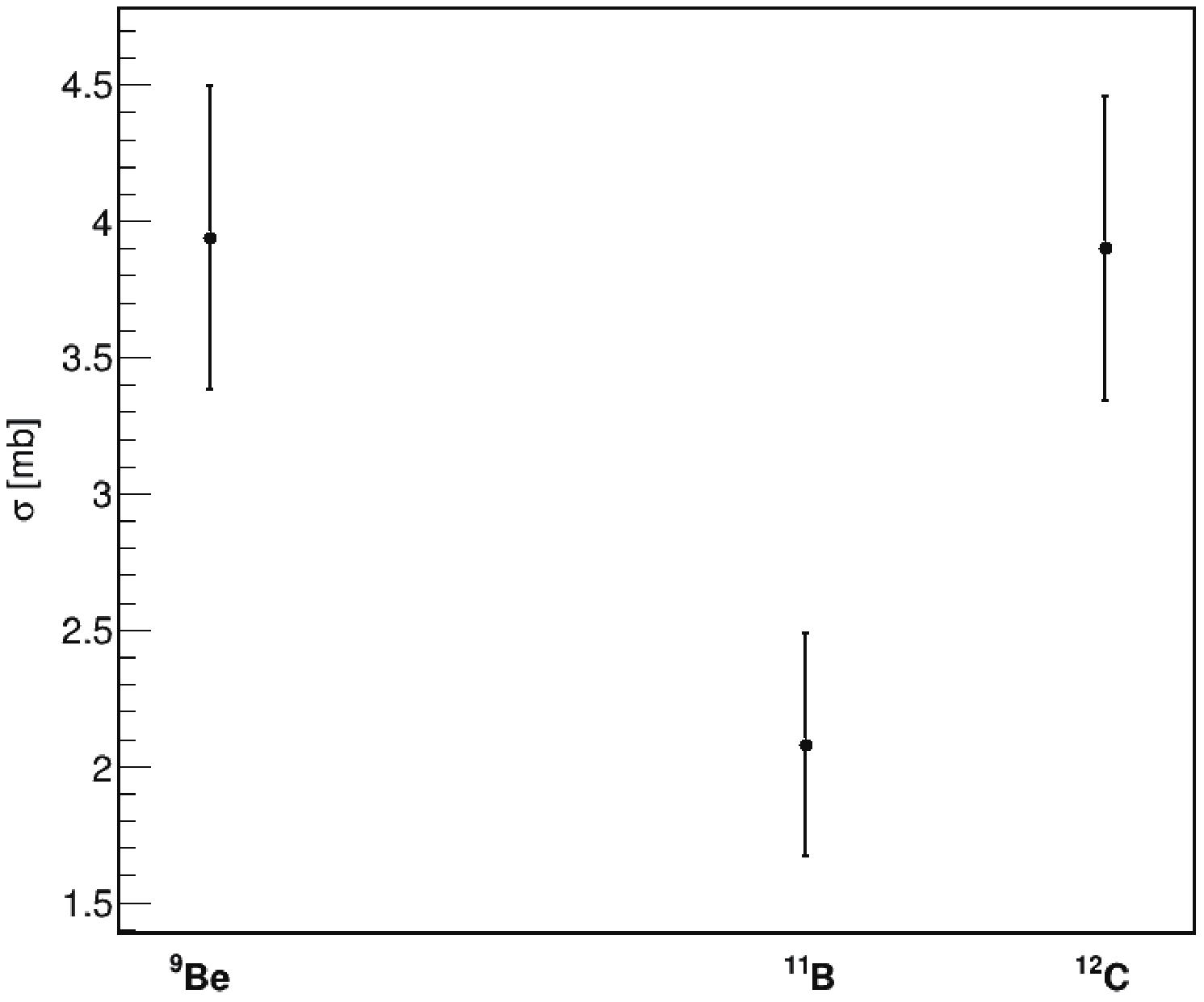HTML
--> --> -->In this paper, we present preliminary results concerning the calculation of SCE and DCE reaction cross sections by means of a constrained molecular dynamics (CoMD) model [7, 8]. We also calculated the total cross section for the DCE reactions by including the contributions from SCE and multi-nucleon transfers. The choice of CoMD model is motivated by recent results regarding its use in investigating the role of pairing correlations in the one neutron transfer and two neutron transfer processes in heavy ion collisions. CoMD model calculations of the ratios between 1NT and 2NT cross sections were in good agreement with the experimental results [9].
The CoMD approach allows for access to all possible exit channels of a heavy ion collision at fixed incident energy and impact parameter. Furthermore, an event-by-event description of the collision, typical of molecular dynamics models, allows for using the same selection criteria for the calculations as in the experimental data analysis. Nevertheless, with respect to more sophisticated approaches, such as distorted wave Born approximation (DWBA) [10], coupled channel Born approximation (CCBA) [11], and coupled reaction channels [12] calculations, molecular dynamics models do not provide information on the detailed level structure of the colliding nuclei. However, as we are interested in the integrated cross section we consider this to be an acceptable limitation. Future improvements of the model will concern the inclusion of details on the nuclear structure. Such an effort will provide a novel approach to heavy ion collisions, in which the nuclear structure features and collision dynamics can be treated within the same framework.
$ f_{i}({{r}}, {{p}}) = \frac{1}{(2 \pi \sigma_{r} \sigma_{p})^{3}} \exp \left [- \frac{({{r}}- \langle {{r}}_{i} \rangle)^{2}}{2 \sigma_{r}^{2}}- \frac{({{p}}- \langle {{p}}_{i} \rangle)}{2 \sigma_{p}^{2}}^2 \right ], $  | (1) |
$ V = V^{\rm vol}+V^{(3)}+V^{\rm sym}+V^{\rm surf}+V^{\rm coul}. $  | (2) |
$ \rho_{ij} \equiv \int {\rm d}^{3}r_{i}{\rm d}^{3}r_{j} \rho_{i}({{r}}_{i}) \rho_{j}({{r}}_{j}) \delta ({{r}}_{i}- {{r}}_{j}), $  | (3) |
$ \rho_{i} \equiv \int {\rm d}^{3}pf_{i}({{r}}, {{p}}), $  | (4) |
$ V^{\rm vol} = \frac{t_{0}}{2 \rho_{0}} \sum\limits_{i,j \neq i} \rho_{ij}, $  | (5) |
$ V^{(3)} = \frac{t_{3}}{(\mu +1) \rho_{0}^{\mu}} \sum\limits_{i,j \neq i} \rho_{ij}^{\mu}, $  | (6) |
$ V^{\rm sym} = \frac{a_{\rm sym}}{2 \rho_{0}} \sum\limits_{i,j \neq i}(2 \delta_{\tau_{i}, \tau_{j}}-1) \rho_{ij} ,$  | (7) |
$ V^{\rm surf} = \frac{C_{s}}{2 \rho_{0}} \sum\limits_{i,j \neq i} \rho_{ij} \nabla^{2}_{\langle {{r}}_{i} \rangle}(\rho_{ij}), $  | (8) |
$ V^{\rm Coul} = \frac{1}{2} \sum\limits_{i,j \neq i} \frac{e^{2}}{\lvert \langle {{r}}_{i} \rangle - \langle {{r}}_{j} \rangle \rvert}erf \left (\frac{\lvert \langle {{r}}_{i} \rangle - \langle {{r}}_{j} \rangle \rvert}{2 \sigma_{r}} \right ). $  | (9) |
Coefficient
$ \langle \dot{{{r}}}_{i} \rangle = \frac{\partial H}{\partial \langle {{p}}_{i} \rangle} \qquad \langle \dot{{{p}}}_{i} \rangle = - \frac{\partial H}{ \partial \langle {{r}}_{i} \rangle}, $  | (10) |
$ \bar{f}_{i} \leqslant 1, \,\,\, \forall i, $  | (11) |
$ \bar{f}_{i} \equiv \sum\limits_{j} \delta_{s_{i},s_{j}} \delta_{\tau_{i}, \tau_{j}} \int_{h^{3}}f_{j}({{r}}, {{p}}){\rm d}^{3}r {\rm d}^{3}p, $  | (12) |
 Figure1. Probability distributions as a function of the reduced impact parameter
Figure1. Probability distributions as a function of the reduced impact parameter SCE processes, therefore, occur in peripheral collisions. The competing processes within similar impact parameter intervals are the subsequent pickup of one neutron and the stripping of one proton, both leading to the same final state. By integrating the probability distributions we obtain the SCE total cross sections
$ \sigma = \int_{b_{\min}}^{b_{\max}}2 \pi b P(b){\rm d} b = 2 \pi \sum\limits_{b = b_{\min}}^{b_{\max}}P(b)b \Delta b . $  | (13) |
 Figure2. SCE cross sections of the reactions
Figure2. SCE cross sections of the reactions The same calculations were performed for DCE reactions, in which we are more interested. In this case, we have second order isospin transitions leading to the exit channels:
 Figure3. Probability distributions as a function of the reduced impact parameter
Figure3. Probability distributions as a function of the reduced impact parameter The integrated DCE cross sections calculated using Eq. (13) are reported in Fig. 4. We notice that the magnitudes of the DCE cross sections are of the order of some tenths of millibar, and are thus much smaller than the SCE cross sections.
 Figure4. DCE cross sections of reactions
Figure4. DCE cross sections of reactions It has already been mentioned that one of the competing processes of DCE reactions is the multi-nucleon transfer. The same final state can be reached through the subsequent transfers of two neutrons and two protons. We have calculated the DCE plus multi-nucleon transfer cross sections, and Fig. 5 shows the comparison between only DCE cross sections and DCE plus multi-nucleon transfer cross sections.
 Figure5. DCE plus multi-nucleon transfer cross sections for reactions
Figure5. DCE plus multi-nucleon transfer cross sections for reactions We observe the
